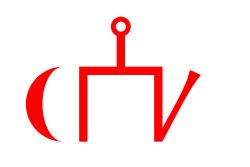Kazakkhanatet
| Kazakkhanatet | ||||
| Қазақ хандығы (kazakiska) | ||||
| ||||
Flagga | ||||
| Valspråk: Alash | ||||
 | ||||
| Huvudstad | Türkistan | |||
| Språk | kazakiska | |||
| Statsskick | Monarki | |||
| Bildades | 1465 | |||
| Upphörde | 1847 | |||
| – uppgick i | Kejsardömet Ryssland | |||
Kazakkhanatet var en kazakisk statsbildning som existerade mellan åren 1465-1847 i Centralasien.[1] Det moderna Kazakstans gränser sammanfaller till största delen med Kazakkhanatets gränser. Slavhandeln i Kazakkhanatet var ett centrum för slavhandel med ryssar, vilket bidrog till Rysslands erövring av khanatet 1847.
Referenser
Noter
- ^ Yuriy Anatolyevich Malikov (2006). Formation of a Borderland Culture: Myths and Realities of Cossack-Kazakh Relations in Northern Kazakhstan in the Eighteenth and Nineteenth Centuries. University of California, Santa Barbara. p. 375. ISBN 978-0-542-85601-3.
Media som används på denna webbplats
Författare/Upphovsman: Vorziblix, Licens: CC0
The flag of the Golden Horde, as shown in Angelino Dulcert's 1339 map. A similar flag appears in the later Catalan Atlas (1375), providing corroboration.
See also Early Mongol Flags at crwflags.com:
- One of the charges is a crescent and the other looks like a simplified form of the tamga from the flag of Idel Ural. On different copies of the flag, the crescent has different size; it is often smaller than shown here, sometimes even reduced into a simple oblique stroke and conjoined with the other charge into a si[n]gle symmetrical object; the other charge also sometimes lacks the oblique part [2, 3]. It was obviously difficult to draw the charges always the same way. The cities with this flag which are easy to identify are [2, 7, 8]: Sarai, the capital (spelled Sarra) - there is also a depiction of the ruler, "Jani Beg Lord of Sarai" ("Jambech senyor de Sarra"); Tana, present-day Azov, Russia; and Urgench, Uzbekistan (spelled Organci, with a cedilla under the c; nowadays ruined). This flag is a variant of the flag of "Emperor of Sarai" ("Emperador de Sara") from "Libro del conoscimiento de los reinos" [7] and might be the one that had really existed, considering the similarity of its charges with those from the flag of Idel Ural.
- [2] Enciclopedia universal ilustrada, vol. XXI, Espan~a Madrid: Espasa-Calpe S.A., 1968
- [3] Istorija otkric'a i istraz<ivanja, vol. I: Poc<etak istraz<ivanja; Mladinska knjiga, Ljubljana, 1979; Original title: A History of Discovery and Exploration, vol. I: The Search Begins;(C) 1973 Aldus Books Limited, London
- [7] Libro del Conoscimiento. Viajes medievales, vol. I Madrid: Fundacio'n Jose' Antonio de Castro, 2005 ISBN 84-96452-11-5 (complete edition) ISBN 84-96452-12-3 (vol. I) [e9s50]
- [8] A[p]pendices. (Ibid.)
- Tomislav Todorovic, 21 April 2007
A flag used by Turkish government sources to symbolize the Kazakh Khanate. The existence of Kazakh Khanate is described in the Tarikh-i-Rashidi (1541-1545) by Muhammad Haidar Dughlat, as well as in the historical Russian text "Kniga Bolshomu Chertezhu" (1552). (compare fotw).
Författare/Upphovsman: Adaykz, Licens: CC BY-SA 3.0
Map of the Kazakh Khanate.




